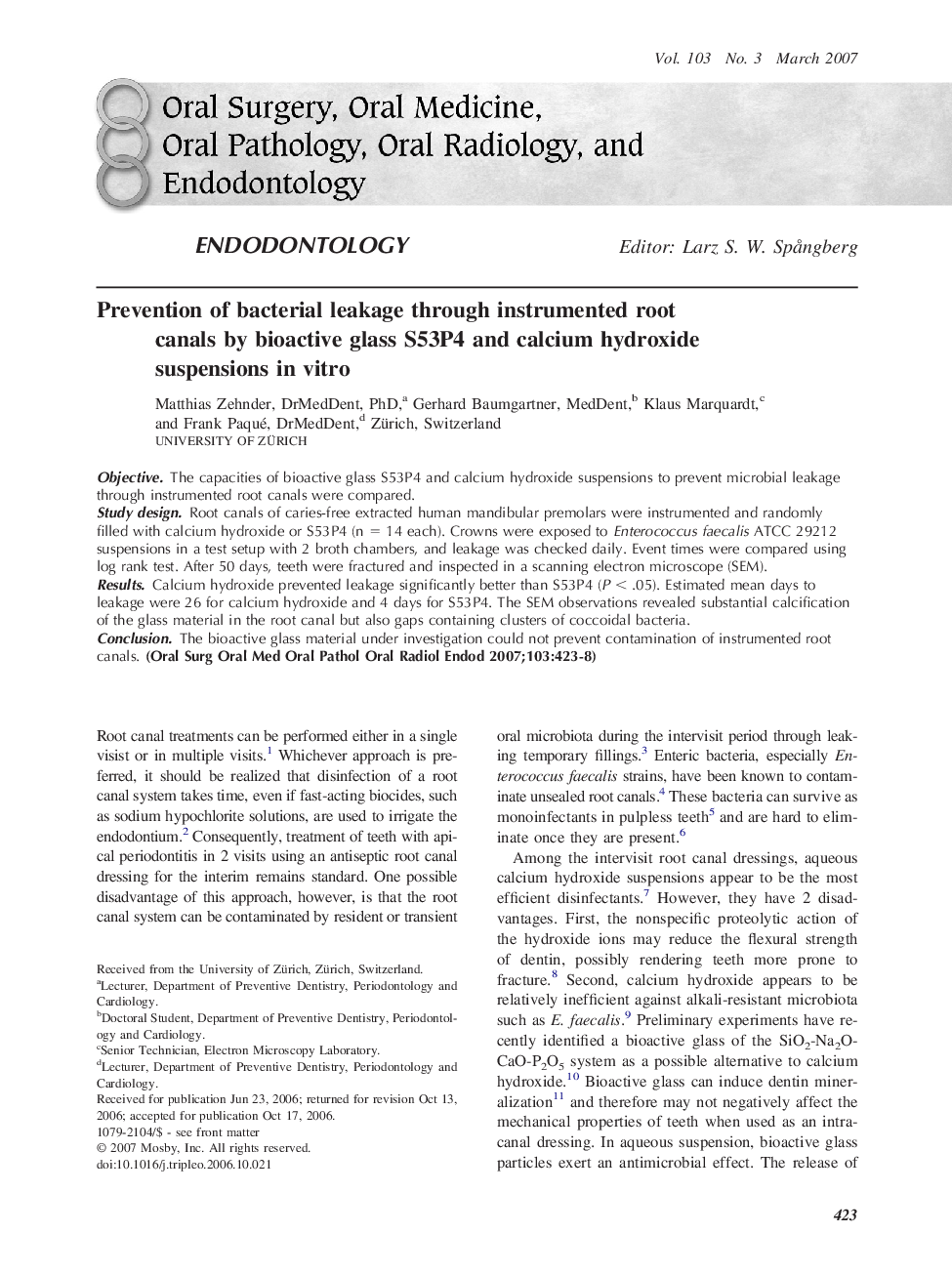| Article ID | Journal | Published Year | Pages | File Type |
|---|---|---|---|---|
| 3169543 | Oral Surgery, Oral Medicine, Oral Pathology, Oral Radiology, and Endodontology | 2007 | 6 Pages |
ObjectiveThe capacities of bioactive glass S53P4 and calcium hydroxide suspensions to prevent microbial leakage through instrumented root canals were compared.Study designRoot canals of caries-free extracted human mandibular premolars were instrumented and randomly filled with calcium hydroxide or S53P4 (n = 14 each). Crowns were exposed to Enterococcus faecalis ATCC 29212 suspensions in a test setup with 2 broth chambers, and leakage was checked daily. Event times were compared using log rank test. After 50 days, teeth were fractured and inspected in a scanning electron microscope (SEM).ResultsCalcium hydroxide prevented leakage significantly better than S53P4 (P < .05). Estimated mean days to leakage were 26 for calcium hydroxide and 4 days for S53P4. The SEM observations revealed substantial calcification of the glass material in the root canal but also gaps containing clusters of coccoidal bacteria.ConclusionThe bioactive glass material under investigation could not prevent contamination of instrumented root canals.
